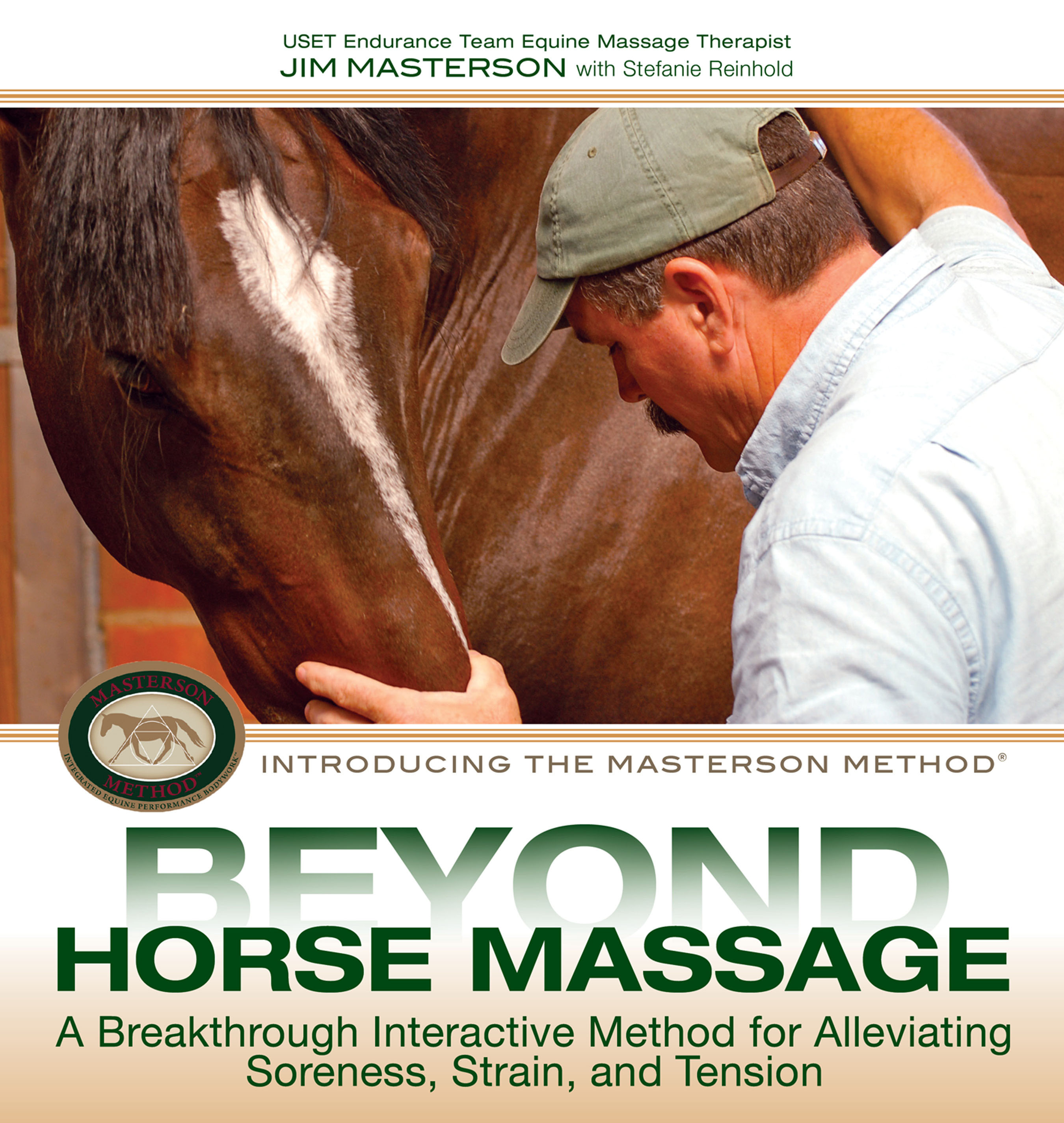This excerpt from Beyond Horse Massage by Jim Masterson is reprinted with permission from Trafalgar Square Books (www.horseandriderbooks.com).
Does your horse have trouble with his leads? Does he have a sore or stiff back? Does he have an intermittent front end “lameness,” is he restricted in the shoulders, or is he short-strided in front? In this excerpt from his best-selling book Beyond Horse Massage, bodywork innovator Jim Masterson, founder of The Masterson Method®, explains how to provide one release that can help solve all these problems.
Nowadays, most hunter-jumpers are larger Warmbloods. They carry most of their weight on the front end and they land on the front end, so feet and legs are constant issues. Consequently, they accumulate a lot of tension in the poll and atlas, and in the lower neck and shoulder. In addition, most hunter-jumpers spend a lot of time in the stall—not necessarily the healthiest thing.
We can get under the horse’s scapula to access movement where the last vertebra of the neck joins the body—the Cervical-Thoracic Junction—and release tension in major muscles of the junction.
Release of tension in deeper muscles that affect movement of both forelimbs, neck, back, and hind end by asking for movement in this junction improves the shock-absorber ability of the front end, releases tension in the poll, and encourages cooperation between the front and hind ends.

Photo by Marcus Brauer
C7 is the lowest vertebra of the neck. T1 is the first vertebra of the trunk. The C7-T1 Junction is where they join. The withers are part of the trunk vertebrae from T4 through T8. The thoracic vertebrae from T1 to T3 are “hidden withers,” buried within muscles underneath the scapula of the horse.
How to Do the Release:
Step 1. Stand at the horse’s left shoulder with enough room to bring his nose around. Place your left leg a little behind you.
Step 2. Put your left hand gently on his nose and place the back of the right hand against his lower neck, a little higher up toward the withers, pointing down.
Step 3. Make your right hand hard, gently increase pressure against the neck with the back of your hand, and find the fold of muscle in front of the scapula.
Step 4. Slide your hand down the underside of the muscle very slowly, watching the horse’s eye, and feeling for the horse to tense.
Step 5. Shift the horse’s weight gently to the opposite leg when you reach the area of the lower vertebra of the Cervical-Thoracic Junction, or when you feel the brachiocephalic muscle release. Use your weight to get him to slightly relax the near leg.
Step 6. Continue pushing your hand down through the muscle, out the bottom.
Step 7. Step back and see what he has to say.
Tips:
- Remember to keep your neck hand hard and proceed gently, staying “under the horse’s radar.”
- Keep your nose hand soft whenever the horse is soft.
- Anticipate when the horse begins to tense and stop pushing down. Hold what you’ve got until the horse relaxes a bit, then continue on down.
- Use your weight to ask the horse to shif this weight slightly to the opposite leg.
- Don’t doubt your success or the effect the technique is having on the horse. If you feel that nothing is happening, come back the next day and try it again. You’ll find that nine times out of ten, there will be an improvement in movement. Many times you’ll also find an improvement in relaxation and the horse’s attitude.

Pick up your copy of the Beyond Horse Massage by Jim Masterson from Trafalgar Square Books HERE!
